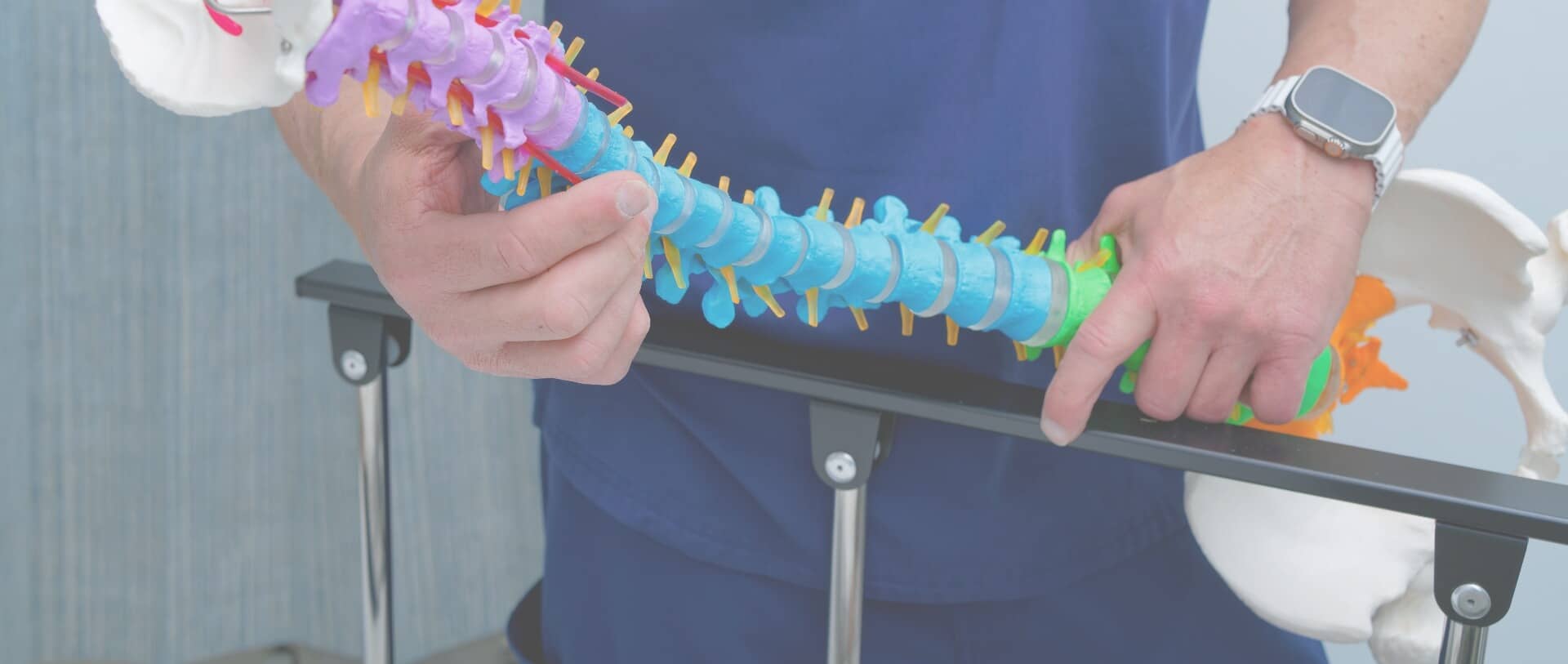
CONDITIONS
Spondylolisthesis
Spondylolisthesis is a condition that affects the spine, causing vertebrae to slide forward and over the one below it. This can cause discomfort and mobility issues. While spondylolisthesis can occur at any age, it is most commonly diagnosed in individuals over 50 years of age and is more common in women than men. Contact the spine experts at Gottlieb Spine to learn about how spondylolisthesis can be managed to restore spinal health.
What is Spondyloslithesis?
Spondylolisthesis occurs when one of the vertebrae in the spine slips out of place and onto the vertebrae below it. The displacement can lead to various degree of spinal instability, and the slipped vertebrae may put pressure on surrounding nerves and cause back pain. There are several types of spondylolisthesis:
- Isthmic spondylolisthesis: This type of spondylolisthesis is caused by a compression fracture
- Degenerative spondylolisthesis: As we age, our joints – including those in the spine – become weaker and allow vertebrae to slip out of alignment. This type of spondyloslisthesis is most common in those over the age of 50.
- Traumatic spondylolisthesis: Often affecting athletes who play strenuous or impact sports, such as footbal or gymnastics, this type of spondylolisthesis is caused by injury
- Pathological spondylolisthesis: This type of spondylolisthesis is caused by disease or infection that weakens your spine, allowing vertebrae to slip out of place
- Congenital spondylolisthesis: Also known as dysplastic spondylolisthesis, this condition is present at birth
What are the Signs and Symptoms of Spondyloslisthesis?
The severity of your symptoms can vary, depending on the degree of slippage, nerve compression, and other factors. It’s also possible to have spondylolisthesis and not experience any symptoms. In most cases, however, you’ll first notice back pain without a clear cause. Other common symptoms of spondylolisthesis include:
- Lower back pain that can radiate to the buttocks and thighs
- Leg pain due to nerve compression
- Numbness or tingling in the legs
- Muscle weakness, particularly in the legs
- Difficulty walking or standing for long periods
- In severe cases, bowel or bladder dysfunction
How is Spondylolisthesis Diagnosed?
During your first consultation with Dr. Gottlieb, he will typically being with your medical history, current symptoms, overall state of health, and involvement in sports. He may also perform in-office diagnostic tests, including:
- Evaluation for muscle spasms
- Assessment of muscle weakness
- Examination for tender areas along the spine
- Observation of posture
- Assessment of gait while walking
- A series of movements to test the range of motion for your child
Following your first appointment, Dr. Gottlieb will send for imaging tests. These typically include x-rays, CT scan, SPECT scan, or MRI. These images can reveal the vertebral slippage and any potential stress fractures in the spine. The degree of slippage of the vertebrae will guide Dr. Gottlieb in determining your treatment plan.
How is Spondyloslithesis Treated?
Treatment plans at Gottlieb Spine for spondylolisthesis will often start with at-home remedies, such as:
- Heat
- Bracing
- Rest
- Activity modification
- Anti-inflammatory medication
Spine surgery may be recommended if you do not see improvement with conservative treatment. The goal of surgery for spondylolisthesis is to stabilize the spine, alleviate nerve compression, and restore spinal alignment. The specific surgical approach chosen by Dr. Gottlieb will depend on the severity of your condition, as well as other individual patient factors, but might include one of these procedures:
- Spinal fusion: Fusion involves joining two or more vertebrae together to create stability and prevent further slippage
- Interbody fusion: In addition stabilizing the spine, interbody fusion involves
removing the intervertebral disc between the affected vertebrae and inserting a bone graft or spaces. This helps restore proper disc height and alignment. - Laminectomy: This procedure involves removing a portion of the lamina to create more space for the spinal cord and nerves. This relieves pressure on the nerves and improves symptoms of nerve compression

Top Quality Care at Gottlieb Spine
Spondylolisthesis can disrupt your comfort and mobility by causing a vertebrae to shift forward over the one beneath it. If you’re suffering from back pain or are concerned about spondylolisthesis, schedule an appointment at Gottlieb Spine. Dr. Jamie Gottlieb can provide expert guidance and effective management strategies for spondylolisthesis to alleviate your discomfort and help you reach optimal health.
SCHEDULE A CONSULTATION